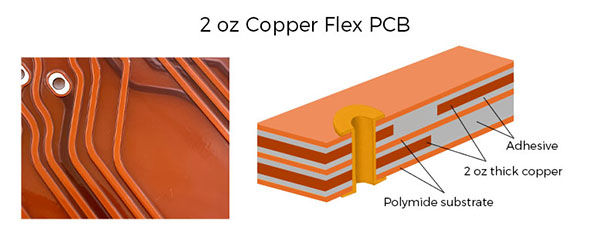Flex PCB Used in Camera Body
- Flex Plus Tech team

- Mar 27
- 4 min read
Updated: Aug 5
Flex PCB technology is now an important part of modern camera bodies. It is widely used in all types of cameras, from DSLR and mirrorless cameras to instant and action cameras, to connect key parts like image sensors, lens modules, electronic shutters, LCD screens, and power units.
Compared to rigid PCB, flex PCBs are lighter, more flexible, and more durable, with a higher wiring density, helping to improve the internal design of cameras. In today’s camera market, flex PCBs are not just simple connectors—they also help with fast data transfer, compact circuit design, and shock resistance.

Main Applications of Flex PCB in Camera Body
Image Sensor to Mainboard Connection
The image sensor (such as CMOS or CCD) is the core component of a camera, and flex PCB is used to:
Enable high-speed data transmission: Modern CMOS sensors support 4K/8K video, requiring data transmission speeds of 5Gbps–10Gbps. flex PCB uses low-loss copper foil and polyimide (PI) substrates to ensure signal stability.
Reduce space occupation: CMOS sensors are connected to the mainboard through multi-layer flex PCBs (2–4 layers) to enable efficient routing in compact camera bodies.
For example, the Sony Alpha 7R V uses a high-density flexible circuit board to connect its 61-megapixel CMOS sensor, ensuring high-resolution image transmission.
Electronic Shutter and Exposure Control
In electronic shutter cameras (such as the Canon EOS R5 and Nikon Z9), flex PCB in camera body is used to:
Connect the shutter drive circuit, ensuring a response time as fast as 1/8000s or even 1/32000s.
Integrate exposure control circuits, reducing the need for separate PCB components and optimizing the overall compactness of the camera.
By incorporating flex PCB in camera body design, manufacturers achieve a more efficient layout while maintaining high-speed performance and durability.
Retractable Lens and Autofocus System
The lens module in a camera is often connected to the mainboard via a flexible PCB in camera body to enable autofocus (AF) and aperture control.
Flex PCB in camera body connects the lens motor (e.g., stepper motor, ultrasonic motor) to ensure fast and accurate focusing. It transmits lens position and aperture signals to optimize exposure and focus accuracy. Since lens mechanisms require frequent bending, flex PCB in camera body is designed with high-flexibility copper foil (with a bending lifespan of over 50,000 cycles) to ensure long-term durability.
For example, the Fujifilm X-T5 uses flexible ribbon cables to connect the lens module, ensuring reliable autofocus and exposure control in an interchangeable lens system.
LCD Screen and Touch Control
Many modern cameras feature flip-out or touch-enabled LCD screens, where flex PCB plays a vital role:
Transmitting high-speed display signals: High-resolution LCD/OLED screens require data transmission rates of over 1Gbps, and flexible PCB ensures stable image display without interference.
Handling touch control signals: flex PCB connects touch sensors, enabling capacitive touch and multi-touch functions.
Durability: Flip-out screen cameras (such as the Sony A7 IV and Canon EOS R6 II) use ultra-durable flex PCBs with a bending lifespan exceeding 100,000 cycles, ensuring long-term functionality.
Battery and Power Management
The power supply module in a camera typically uses a flex circuit board to optimize space and improve durability:
Flex PCB replaces traditional PCB for power connections, reducing weight and freeing up internal space.
High-current transmission capability: Flex PCBs use thicker copper foil (35–70μm) to support 1A–2A charging and discharging currents, ensuring stable power supply during long shooting sessions.
For example, the Sony Alpha 7C features an ultra-thin flex PCB battery connector, reducing camera thickness and making it one of the lightest full-frame mirrorless cameras.
Instant Printing Function (Instant Cameras)
Instant cameras use FPCB to connect the built-in printer module:
Flex PCB connects the thermal print head or inkjet print module, ensuring high-precision image printing.
It supports a high-current drive (1A–2A) to power the printer head efficiently.
For example, the Fujifilm Instax Mini Evo uses a high-current flex PCB to enable high-definition printing while improving print head durability.

Flex PCB Shape Adapts to Camera Body Structure
Unlike rigid PCBs, flex PCBs can be designed in various shapes to fit the compact internal layout of a camera:
Tentacle-shaped: Used to connect multiple sensors or modules, resembling a spider web to enable multi-point signal transmission.
Fan-shaped: Designed for lens modules to distribute signals evenly.
Snake-like: Used in flip-out screens and retractable lenses, reducing mechanical stress and improving lifespan.
Ring-shaped: Used for ring LED lights and automatic aperture control.
For instance, the Canon EOS R6 II utilizes snake-shaped FPC for its flip-out screen to enhance durability, while the Sony A7 IV uses tentacle-like flex PCBs to connect multiple sensor modules and improve signal transmission stability.
How Flex PCB Enhances Camera Performance
Flex PCB in camera body has become an essential component in modern camera design, optimizing space utilization while improving signal transmission quality, durability, and EMI resistance. From image sensors and electronic shutters to lens modules, LCD screens, instant printing functions, and power management, flex PCB in the camera body plays a critical role in ensuring seamless connectivity and reliable performance.
The key trends in FPCB usage in cameras today include:
Higher-density wiring (HDI technology) to support high-resolution image transmission.
Enhanced durability, with bending lifespans exceeding 50,000 cycles.
More complex flex PCB shapes to fit compact camera designs.
Through continuous refinement, flex PCB enables cameras to become lighter, more reliable, and more powerful, meeting the needs of both photography enthusiasts and professional users.




Comments